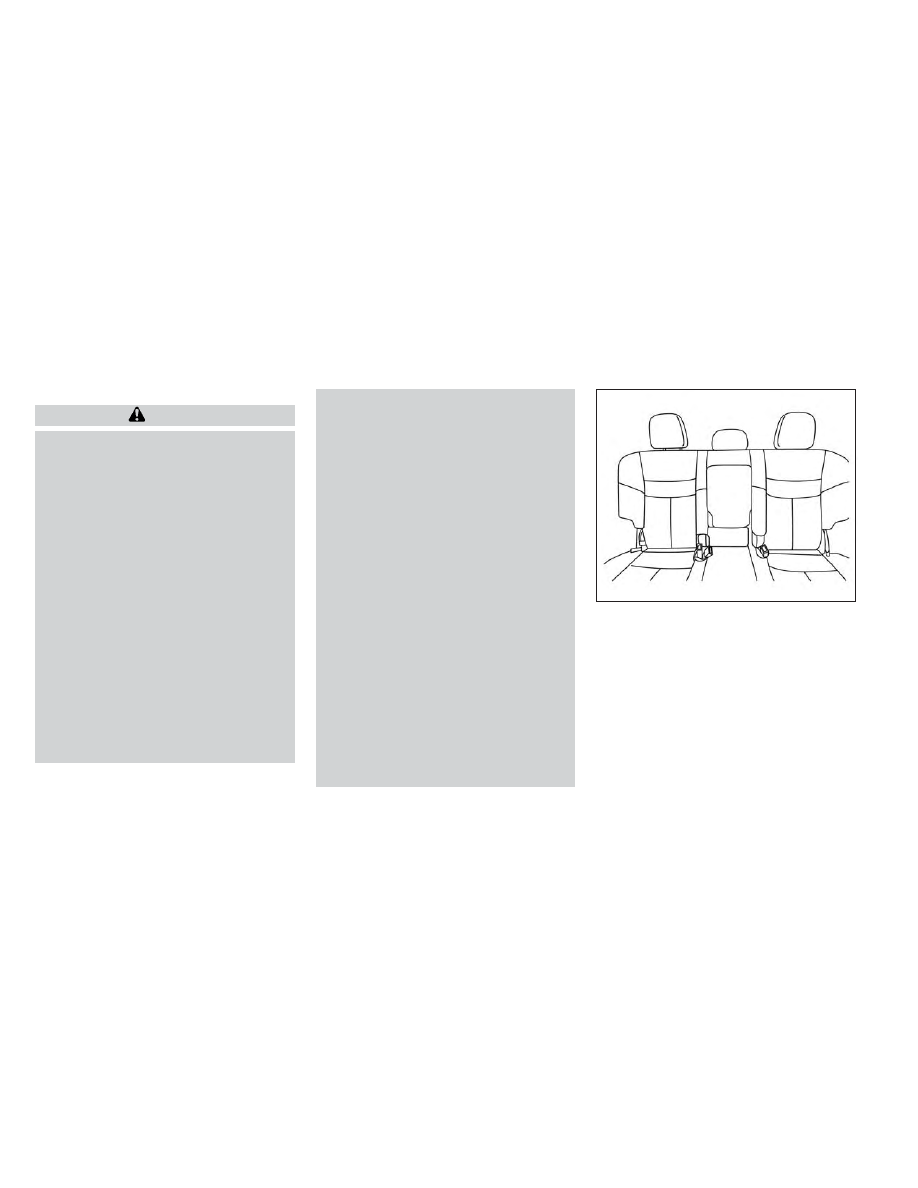Nissan Murano (2022 year). Manual in english - page 2

FLEXIBLE SEATING
WARNING
•
Never allow anyone to ride in the
cargo area or on the rear seats when
they are in the fold-down position. In
a collision, people riding in these ar-
eas without proper restraints are
more likely to be seriously injured or
killed.
•
Do not allow people to ride in any
area of your vehicle that is not
equipped with seats and seat belts.
Be sure everyone in your vehicle is in
a seat and using a seat belt properly.
•
Do not allow more than one person
to use the same seat belt.
•
Do not fold down the rear seats when
occupants are in the rear seat area or
any luggage is on the rear seats.
–
Make sure that the seat path is
clear before moving the seat.
–
Be careful not to allow hands or
feet to get caught or pinched in
the seat.
•
Head restraints/headrests should be
adjusted properly as they may pro-
vide significant protection against
injury in an accident. Always replace
and adjust them properly if they have
been removed for any reason.
•
If the head restraints/headrests are
removed for any reason, they should
be securely stored to prevent them
from causing injury to passengers or
damage to the vehicle in case of sud-
den braking or an accident.
•
When returning rear row seatbacks
to the upright position, the operator
should always verify that the back is
locked in the upright position by gen-
tly rocking the seatback before al-
lowing passengers to occupy the
rear seats. If they are not completely
secured, passengers may be injured
in an accident or sudden stop.
•
Properly secure all cargo to help pre-
vent it from sliding or shifting. Do not
place cargo higher than the seat-
backs. In a sudden stop or collision,
unsecured cargo could cause per-
sonal injury.
Folding the rear bench seat
Before folding the rear seats:
• Disconnect and secure the center seat
belt and tongue into the retractor base.
For additional information, see “Stowing
the rear center seat belt” (P. 1-20).
• Secure the seat belts on the seat belt
hooks on the side wall. For additional in-
formation, see “Seat belt hook” (P. 1-24).
• Remove drink containers from the rear
cup holder.
LRS2589
Safety-Seats, seat belts and supplemental restraint system
1-7